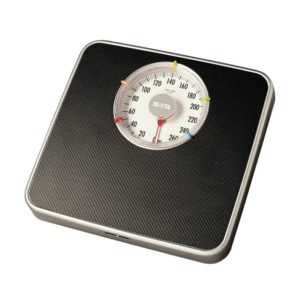 Another great reason to lose weight if you are really overweight (let's be honest, the term is "obese") is a lower risk of two types of skin cancer: squamous cell carcinoma and melanoma. Obesity is considered a cancer risk, that is, it increases the risk of cancer, and after bariatric surgery there is a lower risk of cancer.
Another great reason to lose weight if you are really overweight (let's be honest, the term is "obese") is a lower risk of two types of skin cancer: squamous cell carcinoma and melanoma. Obesity is considered a cancer risk, that is, it increases the risk of cancer, and after bariatric surgery there is a lower risk of cancer.
A long-running study in Sweden (Swedish Obese Subjects study) followed 2 groups of obese individuals for 18 years - 1 group received bariatric surgery (2007 persons) and the other group didn't (2040 persons). They found that the group who had received bariatric surgery, along with a large weight loss, had a significantly lower risk of getting squamous cell carcinoma and melanoma than the group who received conventional "obesity treatment" (such as advice on losing weight).
How much weight did they lose after the surgery? After 2 years the average weight loss in the surgery group was 63.27 pounds (28.7 kg), which leveled off to 47.62 lbs (47.62 kg) by the 15 year follow-up visit. The weight changes in the non-surgery (control) group was small and never exceeded 6.61 pounds in gains or losses.
The researchers give a number of reasons why a large weight loss may be contributing to reduced risk of skin cancer, including leptin uptake changes, lower chronic systemic inflammation, and changes in gut microbes. In summary, they found a 42% lower risk for both forms of skin cancer combined, and 57% lower risk of malignant melanoma in the surgery group (as compared to the non-surgery group).
BOTTOM LINE: If you are really overweight, then try, try, try to lose a big chunk of weight. Your body will thank you in many ways. Not just lower risk of some cancers (including breast cancer), lower risk of diabetes, increased chance of diabetes reversal, lower risk of dementia, lower chronic systemic inflammation, better sperm quality, and on and on.
The CDC says that a person with a BMI (Body Mass Index) of 30.0 or higher is obese, and being overweight is a BMI of 25 to less than 30. [Body Mass Index table]
From Medical Xpress: Lower risk for malignant melanoma after bariatric surgery ...continue reading "Bariatric Surgery, Weight loss, and Lower Risk of Skin Cancer"

 Are you exercising frequently? No? Perhaps you need a good motivating reason. Recent study results provide a good reason (brain health!) for all of us to exercise or do some form of of moderate physical activity for at least 2 1/2 hours per week.
Are you exercising frequently? No? Perhaps you need a good motivating reason. Recent study results provide a good reason (brain health!) for all of us to exercise or do some form of of moderate physical activity for at least 2 1/2 hours per week. Drinking
Drinking  Exercise appears to protect against some cancers. Yes, something so simple as merely getting the recommended amount of 2 1/2 hours per week of exercise (e.g. brisk walks) really lowers the risk of 7 cancers: colon, breast, endometrial, kidney, myeloma, liver, and non-Hodgkin lymphoma.
Exercise appears to protect against some cancers. Yes, something so simple as merely getting the recommended amount of 2 1/2 hours per week of exercise (e.g. brisk walks) really lowers the risk of 7 cancers: colon, breast, endometrial, kidney, myeloma, liver, and non-Hodgkin lymphoma. What is the best way for cleaning hands to prevent the spread of flu viruses? Advertisers would have you believe that only their
What is the best way for cleaning hands to prevent the spread of flu viruses? Advertisers would have you believe that only their  Another great option for losing weight and better health may be to only eat within a 10 hour window, and then not eat for 14 hours (thus a nightly 14 hour fast). Many may find this easier than traditional dieting (counting calories and restricting eating). Just eat breakfast later, supper earlier, and no snacks in the evening. (But water is OK.)
Another great option for losing weight and better health may be to only eat within a 10 hour window, and then not eat for 14 hours (thus a nightly 14 hour fast). Many may find this easier than traditional dieting (counting calories and restricting eating). Just eat breakfast later, supper earlier, and no snacks in the evening. (But water is OK.) Uh-oh, these research findings are not a surprise. A
Uh-oh, these research findings are not a surprise. A  A new study has nicely illustrated how extreme air pollution gets quickly into a person and has negative health effects, but improvement occurs when the exposure to the air pollution ends.
A new study has nicely illustrated how extreme air pollution gets quickly into a person and has negative health effects, but improvement occurs when the exposure to the air pollution ends. Americans are eating so much ultra-processed food that it's now more than 50% of their daily calories. And why shouldn't they eat these foods? They're easy to get (fast foods, prepackaged foods, take out foods), they taste good, and they're great for people pressed for time. That's why they're called "convenience foods" and include fast foods, prepackaged foods, many frozen meals, take out foods, soda, packaged snacks, and many cakes, candies, and cookies.
Americans are eating so much ultra-processed food that it's now more than 50% of their daily calories. And why shouldn't they eat these foods? They're easy to get (fast foods, prepackaged foods, take out foods), they taste good, and they're great for people pressed for time. That's why they're called "convenience foods" and include fast foods, prepackaged foods, many frozen meals, take out foods, soda, packaged snacks, and many cakes, candies, and cookies.